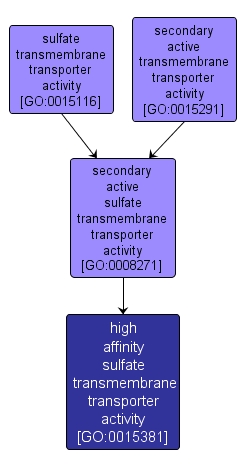| Desc: |
Catalysis of the secondary active high affinity transfer of sulfate from one side of the membrane to the other. Secondary active transport is catalysis of the transfer of a solute from one side of a membrane to the other, up its concentration gradient. The transporter binds the solute and undergoes a series of conformational changes. Transport works equally well in either direction and is driven by a chemiosmotic source of energy. Chemiosmotic sources of energy include uniport, symport or antiport. In high affinity transport the transporter is able to bind thesolute even if it is only present at very low concentrations. |














